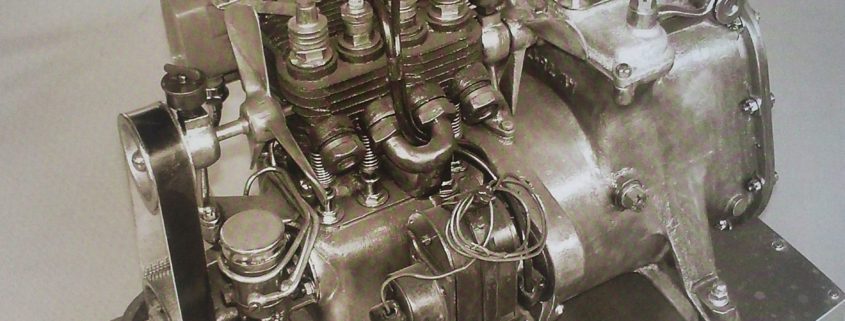New exhibit at fahr(T)raum – 1916 Austro Daimler 2-cylinder Feldbahn engine
Field and industrial railways (Feldbahnen) have assisted the transport of agricultural, forestry and industrial raw materials and products since the 19th century. They offered high transport performance with simultaneous low energy consumption (low rolling resistance of the wheel-rail system). Their use is mainly associated with the processing industry, such as, e.g., chamotte or sugar factories and brickyards. They were also used to pull ships in canals and locks.
By the end of the 19th century, the field railways were flourishing and irreplaceable for almost all armies during war. Compared to standard gauge railways, the narrow-gauge tracks could be laid relatively quickly without massive earthmoving. Artillery and sappers needed the field railways for extensive and heavy transports, such as ammunition and weapons. General supplies and materials for fortifications were easily transported by field railway. The field railways were operated and built by railway troops. They were also called “Lore” railways since the material transport was often per Lore (tipper wagon).
Ferdinand Porsche, who had already developed a tractor for military use in 1914 (“Daimler horse”), invented a 2-cylinder 5-horsepower petrol engine for Austro Daimler in 1916, which was mounted on a field railway chassis for use as a locomotive.
The heyday of the field railways lasted until the Second World War. After that, the field railways were increasingly displaced by trucks, floor-level conveyers and conveyor belts. However, even today one cannot completely do without field and industrial railroads; e.g. in peat extraction, mining, tunneling and tunnel construction. Nowadays there are also vehicles within factories that run without rails but are tracked electronically.
Experience mobility history up close and see the 2-cylinder Feldbahn engine from 1916 in fahr(T)raum Mattsee for yourself!






